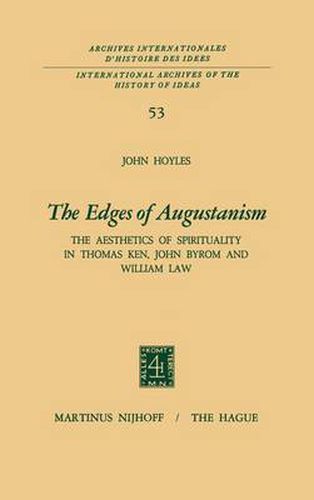Readings Newsletter
Become a Readings Member to make your shopping experience even easier.
Sign in or sign up for free!
You’re not far away from qualifying for FREE standard shipping within Australia
You’ve qualified for FREE standard shipping within Australia
The cart is loading…






This title is printed to order. This book may have been self-published. If so, we cannot guarantee the quality of the content. In the main most books will have gone through the editing process however some may not. We therefore suggest that you be aware of this before ordering this book. If in doubt check either the author or publisher’s details as we are unable to accept any returns unless they are faulty. Please contact us if you have any questions.
It has recently been argued that the 18th century can no longer be 1 seen as gripped in the strait-jacket of Augustanism and Neoclassicism. Such labels are seen as doing less than justice to the rich variety of individual talents and intellectual trends which collectively constitute 18th century culture. While welcoming the interment of the long standing myth of the peace of the Augustans, there seems little point in placing an interdict on labels which, willy-nilly, have stuck. In economic, social and ecclesiastical terms there is an age between 1689 and 1789 whose homogeneity is reflected in its cultural products. There is a mainstream which the strength and variety of counter currents and cross-currents corroborate rather than disintegrate. It is the purpose of this study to reveal some aspects of this mainstream by examining certain cross-currents which overlap its edges. Hence the choice of Thomas Ken (1637-1711), John Byrom (1692-1763) and William Law (1686-1761).
$9.00 standard shipping within Australia
FREE standard shipping within Australia for orders over $100.00
Express & International shipping calculated at checkout
This title is printed to order. This book may have been self-published. If so, we cannot guarantee the quality of the content. In the main most books will have gone through the editing process however some may not. We therefore suggest that you be aware of this before ordering this book. If in doubt check either the author or publisher’s details as we are unable to accept any returns unless they are faulty. Please contact us if you have any questions.
It has recently been argued that the 18th century can no longer be 1 seen as gripped in the strait-jacket of Augustanism and Neoclassicism. Such labels are seen as doing less than justice to the rich variety of individual talents and intellectual trends which collectively constitute 18th century culture. While welcoming the interment of the long standing myth of the peace of the Augustans, there seems little point in placing an interdict on labels which, willy-nilly, have stuck. In economic, social and ecclesiastical terms there is an age between 1689 and 1789 whose homogeneity is reflected in its cultural products. There is a mainstream which the strength and variety of counter currents and cross-currents corroborate rather than disintegrate. It is the purpose of this study to reveal some aspects of this mainstream by examining certain cross-currents which overlap its edges. Hence the choice of Thomas Ken (1637-1711), John Byrom (1692-1763) and William Law (1686-1761).